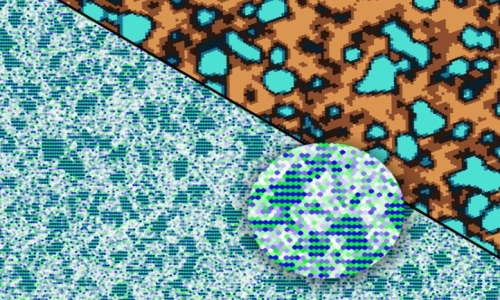


 2:6:40
2:6:40  2025-02-18
2025-02-18  1172
1172

The Artificial Intelligence of Things framework enhances the accuracy of human activity recognition.
The Artificial Intelligence of Things (AIoT) integrates Artificial Intelligence (AI) with the Internet of Things (IoT), combining the strengths of both technologies. Unlike traditional IoT systems, where devices collect and transmit data to a remote server for processing, AIoT devices process data locally in real-time, allowing them to make intelligent decisions on the spot. This capability has led to widespread adoption in areas such as intelligent manufacturing, smart home security, and healthcare monitoring.
In smart home applications, accurate human activity recognition is essential, enabling AIoT systems to detect activities like cooking or exercising. By analyzing this data, the system can automatically adjust lighting, play music, or optimize energy usage, enhancing both convenience and efficiency. Among the various approaches to motion recognition, WiFi-based detection stands out due to its widespread availability, cost-effectiveness, and ability to preserve user privacy.
Breakthrough in AIoT: The MSF-Net Framework
Recently, in a novel research article, a team of researchers, led by Professor Gwanggil Jeon from the College of Information Technology at Incheon National University, South Korea, has come up with a new AIoT framework called multiple spectrogram fusion network (MSF-Net) for WiFi-based human activity recognition. Their findings were recently published in the IEEE Internet of Things Journal.
Prof. Jeon explains the motivation behind their research. “As a typical AIoT application, WiFi-based human activity recognition is becoming increasingly popular in smart homes. However, WiFi-based recognition often has unstable performance due to environmental interference. Our goal was to overcome this problem.”
MSF-Net: A Deep Learning Framework for Enhanced Activity Recognition
In this view, the researchers developed the robust deep learning framework MSF-Net, which achieves coarse as well as fine activity recognition via channel state information (CSI). MSF-Net has three main components: a dual-stream structure comprising short-time Fourier transform along with discrete wavelet transform, a transformer, and an attention-based fusion branch. While the dual-stream structure pinpoints abnormal information in CSI, the transformer extracts high-level features from the data efficiently. Lastly, the fusion branch boosts cross-model fusion.
The researchers performed experiments to validate the performance of their framework, finding that it achieves remarkable Cohen’s Kappa scores of 91.82%, 69.76%, 85.91%, and 75.66% on SignFi, Widar3.0, UT-HAR, and NTU-HAR datasets, respectively. These values highlight the superior performance of MSF-Net compared to state-of-the-art techniques for WiFi data-based coarse and fine activity recognition.
“The multimodal frequency fusion technique has significantly improved accuracy and efficiency compared to existing technologies, increasing the possibility of practical applications. This research can be used in various fields such as smart homes, rehabilitation medicine, and care for the elderly. For instance, it can prevent falls by analyzing the user’s movements and contribute to improving the quality of life by establishing a non-face-to-face health monitoring system,” concludes Prof. Jeon.
Overall, activity recognition using WiFi, the convergence technology of IoT and AI proposed in this work, is expected to greatly improve people’s lives through everyday convenience and safety!
Reality Of Islam |
|

By applying

Stanford, C

A new study

Researchers
 9:3:43
9:3:43
 2018-11-05
2018-11-05
10 benefits of Marriage in Islam
 7:5:22
7:5:22
 2019-04-08
2019-04-08
benefits of reciting surat yunus, hud &
 9:45:7
9:45:7
 2018-12-24
2018-12-24
advantages & disadvantages of divorce
 11:35:12
11:35:12
 2018-06-10
2018-06-10
 6:0:51
6:0:51
 2018-10-16
2018-10-16
 5:57:34
5:57:34
 2023-03-18
2023-03-18
 8:3:0
8:3:0
 2018-06-21
2018-06-21
 2:13:43
2:13:43
 2022-05-27
2022-05-27
 2:5:14
2:5:14
 2023-01-28
2023-01-28
 11:34:48
11:34:48
 2022-06-29
2022-06-29
 10:35:40
10:35:40
 2022-05-26
2022-05-26
 7:0:55
7:0:55
 2022-05-17
2022-05-17
 5:41:46
5:41:46
 2023-03-18
2023-03-18
| LATEST |